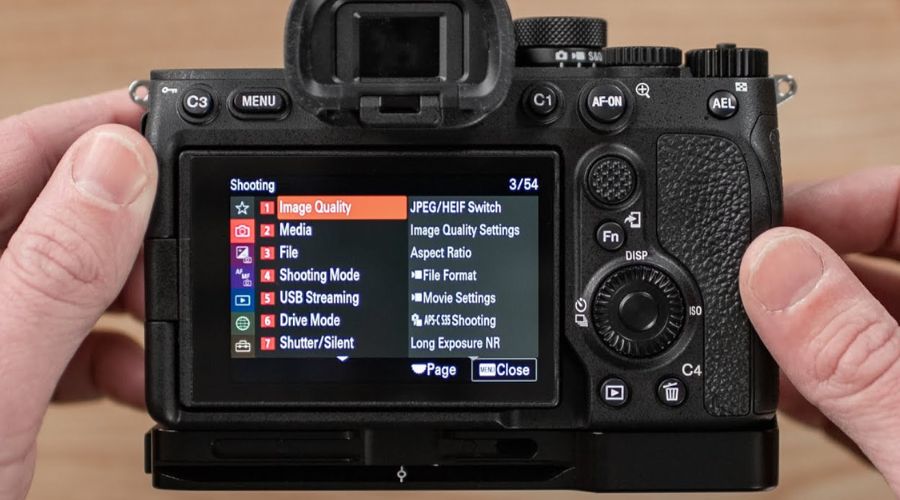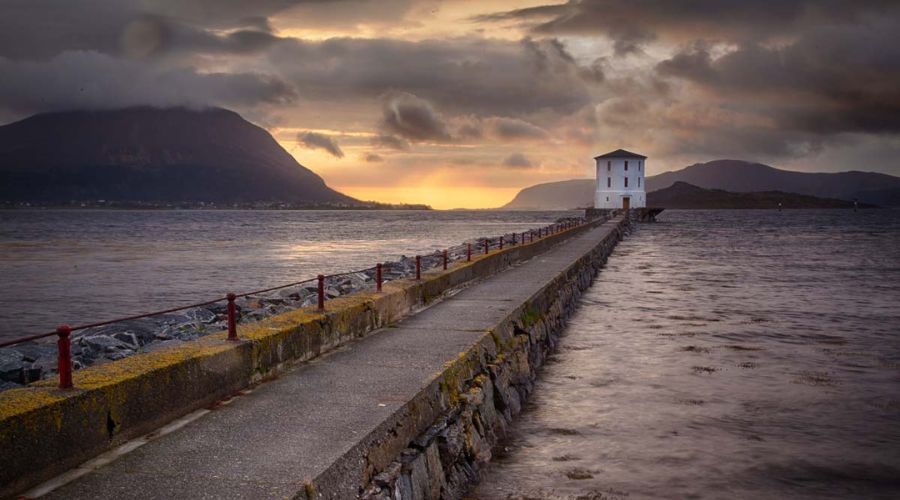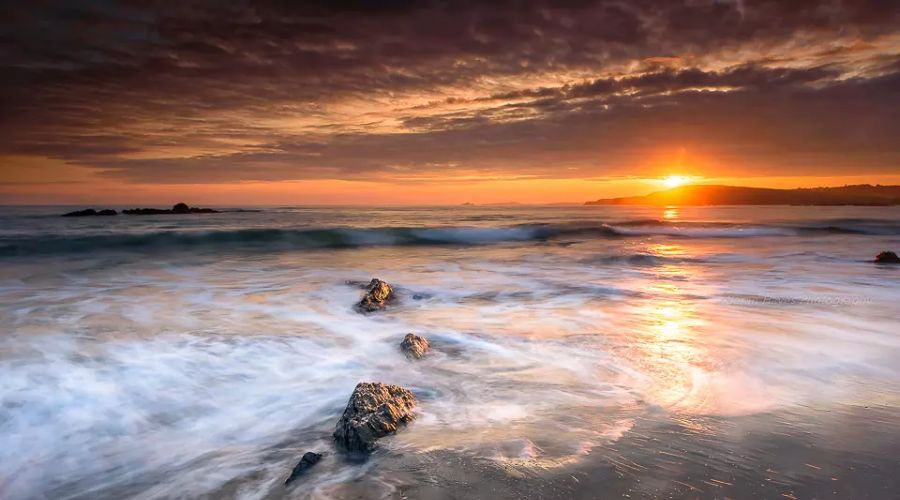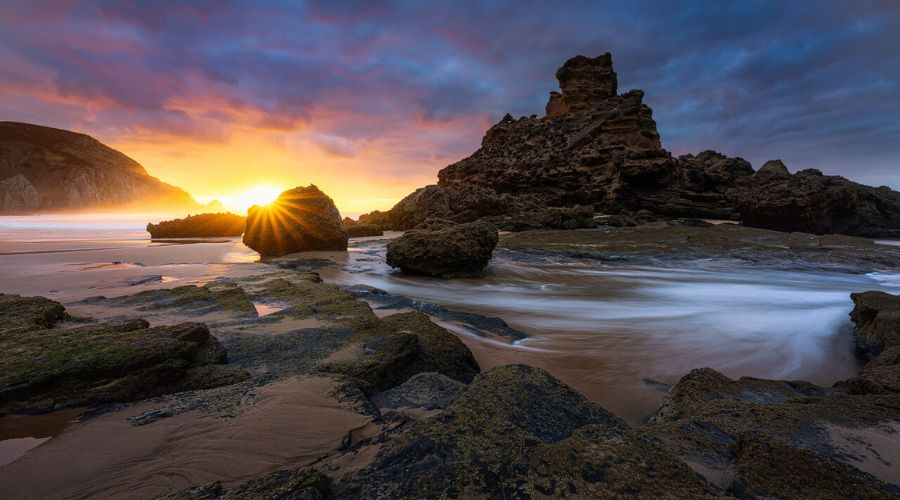Essential Gear for Seascape Photography
Before you dive into snapping waves and shoreline scenes, make sure you’ve got the right tools. Think of your equipment as a trusty sidekick, ready for the salty splash adventure.
You wouldn’t go into battle without your armor, right? Well, same goes for facing the energetic sea.

Choosing the Right Camera and Lenses for Seascapes
When picking out your camera and lenses, go for the dynamic duo that can handle the high seas.
A camera that laughs in the face of a little salt spray and a lens that can capture the grumpy old sea, from the quiet ripples to the roaring waves, are what you’re after.
A wider lens will scoop up all the drama of the horizon, while a telephoto can zoom in on Neptune’s finer details, like a surfer hanging ten on a distant wave.
Important Filters for Controlling Light and Reflection
Filters are the secret sauce that can add zing to your photos. Polarizing filters will make the water’s hue pop and cut the glare, giving your images that ‘wowza’ factor.
And don’t forget neutral density filters for those silky smooth water shots. They’re like sunglasses for your camera, allowing you to slow down the shutter speed without overexposing the shot.
Using a Sturdy Tripod to Combat Wind and Water
A tripod is your unsung hero, planted firmly in the sand like a steadfast lighthouse.
It’s no featherweight – it has to be tough enough to not wobble in the wind or do the jitterbug when a wave says hello.
This steadfast companion will keep your shots sharper than a pirate’s sword, no matter how much the sea tries to throw you off balance.
Additional Accessories for Protection and Convenience
Last but not least, accessorize like you’re going to a beach party, but with practical gear.
Think waterproof camera bags, lens cloths that brush off sea spray like a sassy seagull, and maybe even a waterproof housing if you’re planning to get up close and personal with the waves.
Being prepared means more time shooting and less time shaking sand out of your gear.
Lock and load your camera bag with these essentials and you’re ready to tackle the wild seas. Capture Mother Nature’s mood swings on the coast and come back with epic shots that would make Poseidon jealous.
Technical Settings for the Best Results
To snap that perfect seascape, understanding your camera’s technical settings is like knowing the best bait for fishing – essential for a good catch.
Grab your gear and let’s dive right into the nitty-gritty of camera settings for powerful seascape photography.

Understanding the Exposure Triangle in Seascape Photography
Capturing the ocean’s spirit means wrestling with light – and that’s where the Exposure Triangle steps in.
Think of aperture, shutter speed, and ISO as three dance partners, moving in sync to the rhythm of your scene.
Aperture controls how wide your lens opens – like squinting in bright light or widening your eyes in the dark.
Shutter speed freezes the frolic of the waves or turns them into a silky blur.
ISO? It’s your camera’s sensitivity to light. Crank it up for darker conditions, but watch out for that pesky graininess sneaking into your beach party.
Using the Right Shutter Speeds for Dynamic Water Motion
Gone fishing for motion in your images? The shutter speed’s your rod.
Fast speeds can snap each droplet mid-splash like a magician freezing time. Or slow it down, let the water swoosh into a mystical mist.
But remember, slow shutter speeds can be slippery; a tripod is your best mate to avoid a blurry mess.
Aperture and ISO Settings for Sea and Sky Clarity
Want everything crisp, from sand grains to cloud wisps? Crank your aperture’s number high, like turning up the detail knob.
Low ISO keeps the grain as absent as clouds on a sunny day. But keep an eye on the light; like surfers waiting for the right wave, you need enough to make the shot work.
The Importance of Manual Focus in a Changing Environment
Auto-focus is like autopilot: handy but not always reliable. When the ocean’s mood flips faster than a fish out of water, switch to manual.
Twist that lens like tuning a radio; find that sweet spot where every droplet’s story is sharp. And voilà, you’ve captured the ocean’s soul.
With some practice, your hands will dance over your camera setting up these techniques like a maestro leading an orchestra.
Composition Techniques for Stellar Seascapes
Perfecting the art of powerful seascape photography starts with a solid grasp of composition.
Let’s dive right in and learn how to make your seascape images truly pop!

Incorporating the Rule of Thirds in Seascapes
Picture this: you’re facing the vast ocean, camera in hand. Ready to snap that breathtaking shot?
Use the rule of thirds by imagining a tic-tac-toe grid over your viewfinder. Placing points of interest at the intersections or along the lines makes for a more balanced and inviting photo.
Try it; you’ll see your images come alive!
Leading Lines and Natural Patterns for Visual Flow
You’ve got the horizon and the rolling waves, so why not let them lead the dance?
Natural lines like the meeting of sand and sea or a row of rocks can guide the viewer’s eye and add a sense of motion to your seaside saga.
Finding Foreground Interest for Depth and Scale
Sometimes, what’s up close steals the show. A shell, a piece of driftwood, or even footprints in the sand can serve as a focal point, giving a sense of depth.
Plus, it offers a glimpse into the scale of the vast ocean before you. Go on, give that foreground some love!
Working with the Horizon: Placement and Balance
The horizon is your seascape’s backbone. Placing it smack-dab in the middle can split your photo in two – a no-no for dynamic composition.
Aim high or low; just remember to keep it straight unless you’re purposefully tilting for a bit of dramatic flair.
Combining these powerful techniques will elevate your seascape photography game.
Mastering the Light in Seascape Photography
Latching onto the magic of seascape photography kicks off with a simple mantra – follow the light.
But it’s not just any light you’re after. You’re hunting for the kind that dances across the water and plays tag with the clouds.
Let’s dive in and break down how to make that light work for you.

Utilizing the Golden Hour for Soft, Warm Light
The golden hour is like Mother Nature’s filter, splashing everything with a touch of honey. You’ll want to schedule your snaps when the sun is playing peek-a-boo with the horizon.
Everything gets a sort of halo, making even the most mundane seascapes look like they’re straight out of a fairy tale.
Don’t be fooled by its name, though; “hour” is just a figure of speech. It’s shorter near the equator, so keep your eyes on the watch and fingers on the shutter.
Navigating the Challenges of Harsh Midday Sunlight
When the sun hits its peak, it’s like a spotlight that doesn’t know when to quit.
Keep a polarizing filter handy to cut through the glare and give those waves more definition.
High noon light is all about contrast, so play with shadows and highlights to turn the blinding into the brilliant. It may get hot out there, but your shots will be cool as a cucumber. Just remember, squint less, shoot more.
Capturing the Drama: Bad Weather and Unique Lighting
Think of clouds and storms as the drama queens of the sky. They’re ready to kick your photos up a notch with some real mood swings.
Overcast days paint your scenes with soft box lighting, while a storm rolling in can churn up the sea like a moody masterpiece.
Safety first, though, you don’t want to be the human lightning rod out there. But if you can capture that brooding vibe, you’ve got gold.
Long Exposure Techniques for Creative Lighting Effects
For a dash of mystery, go long – long exposure, that is. Set your camera on a tripod, let the shutter linger open, and watch the water turn to silk.
It’s like casting a spell where time slows down, and everything smooths out. The skies get all dramatic, and you create a whole new world where the sea whispers secrets.
Just remember, patience is your sidekick with long exposure, so let it work its slow magic.
With these light-bending tricks up your sleeve, your seascape photography will have that wow factor you’re after.
Post-Processing Tips for Enhancing Your Seascapes
When you’ve snapped that picture-perfect wave, the best techniques for powerful seascape photography come into play behind the scenes.
Let’s dive right into the digital darkroom and buff up those photos to make them truly shine.
Adjusting Contrast and Color for Visual Impact
Crank up that contrast, but don’t go overboard, or you’ll have folks squinting at the brightness like they just walked into the sun.
Get the colors popping like a kid’s first trip to the candy store. Boost those blues and make the sea look as inviting as a pool on a hot summer day.
Remember, a little goes a long way.
Techniques for Balancing the Exposure between Sky and Sea
The sky’s blushing with colors while the sea’s throwing shade. Align their exposure like two kids on a seesaw – find the balance.
Split your screen like a banana split and spoon-feed those adjustments for a photo that’s as well-balanced as a gymnast on a beam.
Sharpening and Noise Reduction Best Practices
Sharpen that image like you would a pencil, but don’t turn your seascape into a scratchy sweater – it’s gotta be smooth.
And when it comes to noise, shush it down like you’re in a library, but do it gently so that you don’t smudge that beautiful scene. Just right makes might!
Adding the Finishing Touches with Vignettes and Filters
Add a vignette like you’re framing your favorite auntie’s portrait.
As for filters, think of them like seasoning – sprinkle just enough to enhance, but don’t drown the dish.
With these little touches, you’ve got a picture that’ll hang in the gallery of ‘Wow!’
Sail Home with These Seascape Snap Tips
Alright, you’ve ridden the wave of tips for capturing the sea in all its majesty.
Remember, the best techniques for powerful seascape photography are like a sturdy boat – they keep you afloat in the vast ocean of picture-taking. It’s a lot to soak in, but you’ve got the smarts to snap the shore like a pro.
Take these tricks to heart, like an old sea shanty you can’t help but hum.
Timing is everything: chase the light like it’s buried treasure. Mind your horizon; keep it level, unless you’re going for that ‘drunken pirate’ vibe.
Let nature’s rhythm guide you—grab your camera when the sea calls out your name. You don’t need a peg leg and a parrot to make these shots your own treasures.
So, before you sail off into the sunset, camera in hand, remember that every photo tells a tale. Make yours one to remember.
Frequently Asked Questions
What’s the best time of day for seascape photography?
Crack of dawn or twilight, your camera loves that golden light. Aim for the early morning or late afternoon. The sun plays nice then, giving your photos a warm, magical glow. Also, fewer people are out, so you get the sea all to yourself.
How do I keep my camera safe from the saltwater?
Think of your camera as a cookie. You wouldn’t dunk it in milk. Same goes for the sea. Keep a safe distance from the waves, and shield it with a clear filter. If the sea sprays you, a dry cloth is your best pal. Wipe it off pronto!
Do I need a tripod for seascape shots?
You betcha! A tripod is like giving your camera a comfy lawn chair. It keeps things steady, especially for those dreamy long-exposure shots. Find one that’s light but sturdy, so it won’t bail on you when the wind kicks in.
Any tips for capturing the movement of the water?
Slow and steady wins the race here. Slow down your shutter speed to get that silky water look. But, don’t go too slow, or your picture might turn into a watercolor painting. Find a sweet spot, around a few seconds, for a perfect blur.
What should I focus on to get sharp seascape images?
Find a hero in your scene. A rock, a shell, or a chunk of driftwood. Lock your focus on it. This gives your photo a focal point and tells a story. Just like in life, sometimes the little things make all the difference in a sea of details.
Can I shoot powerful seascapes on cloudy days?
Clouds are the drama queens of nature. They add oomph and mood to your photos. Stormy skies make waves look wilder, and fluffy clouds at sunset are a cotton candy delight. So, yes, capture the skies’ mood swings for memorable shots.

